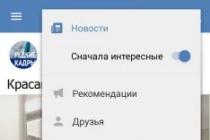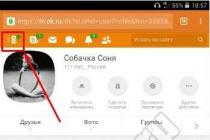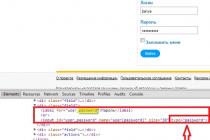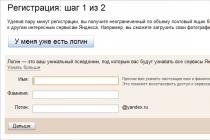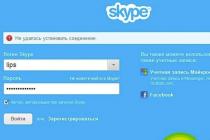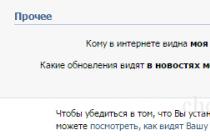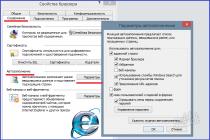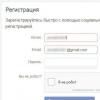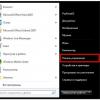, a floppy disk, or other disk storage device. (For a floppy disk, this is the first physical sector; for a hard disk, this is the first physical sector for each partition.) When the computer is booted from a floppy disk, it is loaded into memory by the POST program (on IBM PC computers, usually from address 0000: 7c00), command control is transferred to it long jump.
Boot sector, sometimes called stage1 (i.e. the first stage of loading the operating system), loads the second stage program operating system stage2 ( secondary bootloader, sometimes the boot manager or authorization and access protection program is loaded as stage2). In some operating systems, the stage1 role is played by the MBR, and when the operating system is booted from the hard disk, the boot sector is not used.
see also
- en: NTFS # Partition Boot Sector (eng.)
Write a review on the "Boot Sector" article
Links
- (machine translation; original - (English))
- (English)
- - an example of creating a boot sector
Excerpt from the Boot Sector
In St. Petersburg at that time in the highest circles, with greater fervor than ever before, there was a complex struggle between the parties of Rumyantsev, the French, Maria Feodorovna, the Tsarevich and others, drowned out, as always, by the trumpeting of court drones. But calm, luxurious, preoccupied only with ghosts, reflections of life, Petersburg life went on as before; and because of the course of this life it was necessary to make great efforts to realize the danger and the difficult situation in which the Russian people found themselves. There were the same exits, balls, the same French theater, the same interests of the courtyards, the same interests of service and intrigue. Only in the highest circles have efforts been made to resemble the difficulty of the present situation. It was told in a whisper about how both Empresses acted opposite to each other, in such difficult circumstances. Empress Maria Feodorovna, concerned about the welfare of the charitable and educational institutions under her jurisdiction, made an order to send all the institutions to Kazan, and the things of these institutions had already been packed. The Empress Elizaveta Alekseevna, when asked what orders she would like to make, with her characteristic Russian patriotism, deigned to answer that she could not make orders about state institutions, since this concerns the sovereign; about the same thing that personally depends on her, she deigned to say that she would be the last to leave Petersburg.Anna Pavlovna had an evening on August 26, on the very day of the Battle of Borodino, the flower of which was to be the reading of a letter from the Right Reverend, written when the emperor was sent the image of the Monk Sergius. This letter was considered a model of patriotic spiritual eloquence. It was supposed to be read by Prince Vasily himself, famous for his art of reading. (He also read with the Empress.) The art of reading was considered to be loud, melodious, between a desperate howl and a gentle murmur, pouring words, completely regardless of their meaning, so that quite by accident a howl fell on one word, on others - a murmur. This reading, like all Anna Pavlovna's evenings, had political significance. At this evening there were to be several important persons who were to be ashamed of their trips to the French theater and to be encouraged to a patriotic mood. Quite a lot of people had already gathered, but Anna Pavlovna had not yet seen in the drawing-room all those whom she needed, and therefore, without beginning to read, started general conversations.
Friends, many of you have had problems with loading the operating system more than once and you have asked the question of how to restore the boot of Windows 7 and make the operating system boot normally. In this article, we'll take a look at the most common Windows 7 boot loader repair methods that help in most cases.
1. Boot recovery Windows 7 using the recovery tool
Boot with your version of Windows 7. The main thing is to match the system bit (32-bit or 64-bit). Also, it is desirable that the edition coincide (Home, Professional, Ultimate).
Select "System Restore" instead of installing.

Go to the System Recovery Options window and select the Startup Repair tool.

After that, the recovery program will search for errors in the boot sector and boot partition of Windows 7 and, if found, will try to fix them. After that, a system reboot is required and Windows 7 may boot normally.
If the first time failed to restore the boot using the Windows 7 recovery tool, then try repeating this process 1-2 more times. This often helps, as the repair tool cannot always fix multiple problems in a single pass.
2. Restoring Windows 7 boot using the command line
If you were unable to restore the boot of Windows 7 using the automatic repair tool, then try to do it using the command line. Boot with your version of Windows 7 and select "System Restore" instead of installing.

Go to the System Recovery Options window and select the recovery tool Command line».

After that, a window with a black background will appear, in which you will need to write several commands.

Enter the following commands in turn:
| bootrec / fixmbr |
| bootrec / fixboot |
| bootsect / nt60 ALL / force / mbr |
| exit |
Language switching is performed by the "Alt" + "Shift" key combination. After entering each command (line), press the "Enter" key.
Then restart your computer.

After that, in most cases, the problems associated with the boot sector and the boot loader of Windows 7 will disappear and the operating system will boot normally.
If after using the command line, Windows 7 still does not boot, then try again using the automatic boot repair tool, as we discussed above.
3. Boot recovery Windows 7 with reinstalling the system
If you were unable to restore the boot of the operating system using the methods described above, then most likely you will have to delete the partitions.
Before reinstalling Windows 7, copy all important files from hard disk on or. This can be done using any boot disk LiveCD. Please note that external drive or the flash drive must be connected to the PC before starting the boot from the LiveCD, otherwise they may not be detected.
If due to boot errors you are unable to reinstall Windows 7, then remove all partitions from the disk using a third-party utility, for example, a boot disk Acronis Disk Director. Then try again with creating new partitions.

If at reinstalling Windows 7 at the stage of setting up the disk (creating partitions, choosing a partition for installation) or when you restart the computer during the installation process, you will encounter the same boot errors, then run the command line and run the commands that we discussed above.
In order to prevent future boot problems, you need to determine what exactly caused the problem and not repeat these errors. If you are unable to restore Windows boot, other errors occur with the installation and operation of the system, refer to the website http://esate.ru where you will find instructions on how to solve various problems with the operating system.
ASP900S3 75E120BW F120GBLSB
SSDSC2BW240H601 75E250BW SSDSC2BW240A4K5 7KE256BW
At the stage of logical formatting of each partition (logical disk), four logical areas are created: · boot sector; · File allocation table (EKG1 and FAT2); · Directory; · Data area.
The boot sector on any logical disk (partition) is located first. Its data block (512 bytes) begins with a JMP command that transfers control to the IPL2 program, contains the name of the operating system and its version, contains a block of parameters BIOS disk(BPV), the IPL 2 program that loads the operating system and ends with signature 55AA. Table 5 below explains some of its most important entries.
Boot Sector Changes Number of Reserved Sectors
The number of reserved sectors is now 32 before the first FAT.
New bios parameter block
The EAT32 BIOS parameter block takes up more space than the standard one and is called the Big FAT BIOS Parameter Block (BF_BPB). Because of this, the boot sector now occupies not one, but three physical sectors, and there is an additional one and is located through three physical sectors in the seventh, eighth and ninth physical sectors. BF_BPB is an extended version of the BPB found in 12- and 16-bit FAT. It contains the same structures as the standard BPB, but includes a few additional fields that are required for FAT32. The changes made to BPB to support FAT32 are described below.
Table 5. Critical Boot Sector Entries
|
Length (bytes) |
Content |
|
JMP and NOP commands |
|
|
Title and Windows version |
|
|
Bytes per sector |
|
|
The number of sectors per cluster (always a multiple of two to the power of n) |
|
|
Number of reserved sectors before the first FAT |
|
|
Number of FAT tables |
|
|
Number of elements in the root directory (maximum limit) |
|
|
Total number of sectors (00 00 - if the disk size is more than 32 MB) |
|
|
Environment descriptor; in this case F8, which identifies the drive as hard with any capacity |
|
|
The number of sectors per element of the FAT table |
|
|
Number of sectors per track |
|
|
Number of heads |
|
|
Number of hidden sectors |
|
|
The total number of sectors if the disk size is more than 32 MB |
|
|
Disc number; in this case 80, which identifies the main section |
|
|
Reserved |
|
|
Extended signature (always 29h) |
|
|
Volume serial number |
|
|
Volume label |
|
|
Type of file system(12 or 16 bit) |
Note. This portion of the boot sector is known as the BIOS Parameter Block (BPB). It contains the physical characteristics of the disk that MS-DOS and Windows use when searching for a specific area. By adding or multiplying the values of these parameters, the operating system knows where the FAT is located, the root directory, where the data area begins and ends.
Root directory field.
This item reports the number of sectors in the root directory. For hard drives, this value was always 512 (0200h) and meant the number of directory lines located in thirty-two sectors. It is now changed to 0 (0000h) and is ignored on FAT32 drives.
The number of sectors per element of the FAT table.
This item has been replaced with zero and now acts as a pointer to the corresponding item in BF_BPB when it comes to BF_BPB during the download process.
Disc description.
A new two-byte field used as a flag indicating the number of FAT tables on disk - one or two. If the flag is set, there is only one FAT on the disk, if it is cleared - two. FAT32 created with the Format command always creates 2 FAT tables.
The first cluster of the root directory.
The maximum number of items in the root directory has now been expanded to 65535, and the root directory itself can be anywhere. This value indicates the number of the first cluster occupied by the root directory on the EAT32 disk.
File information sector.
Indicates the second boot sector. It contains information about how many clusters there are on the disk, how many of them are free, and which cluster was most recently allocated. Thus, you no longer need to read the entire FAT table to get this commonly used information.
Boot sector backup.
Another important innovation in EAT32. In previous versions of the FAT file system, damage to the boot sector resulted in the complete loss of all disk contents. FAT32 takes the edge off this problem. When writing changes to the FAT32 boot volume, FDISK creates a boot sector backup and places it in logical sector 6 of that volume. If the new MBR encounters a read error or an incorrect signature when accessing the boot sector, it looks for sector 6 and reads the rest of the boot code from there.
Or another disk storage device. (For a floppy disk, this is the first physical sector, for a hard disk, the first physical sector for each partition) When the computer is booted from a floppy disk, it is loaded into memory by the POST program (in IBM PC computers, usually from address 0000: 7c00), control is transferred to it with the long command jump.
The boot sector, sometimes called stage1, or the first stage of the operating system boot, loads the second stage program of the operating system, stage2 ( secondary bootloader, sometimes the boot manager or authorization and access protection program is loaded as stage2). (In some operating systems, the stage1 role is played by the MBR and when the OS is booted from the hard disk, the boot sector is not used. On non-bootable hard disk partitions, the boot sectors may also not contain the boot program)
see also
Links
- - an example of creating a boot sector
Wikimedia Foundation. 2010.
See what the "Boot Sector" is in other dictionaries:
The Wiktionary has an article "sector" Sector: A sector in geometry is a part of a circle, limited by two for the sake of ... Wikipedia
Sector: Sector ( Mortal kombat... A sector in geometry is a portion of a circle bounded by an arc and two radii connecting the ends of the arc to the center of the circle. Sector structural unit, department and some public or industrial organizations ... ... Wikipedia
This term has other meanings, see Sector. A disk sector is the minimum addressable unit of information storage on disk storage devices (HDD, floppy disk, CD). Part of a disc track. Most devices have ... ... Wikipedia
- (English Boot viruses) a computer virus that writes itself to the first sector of a floppy or hard disk and is executed when the computer boots. When you turn on or restart the computer, Boot virus replaces the boot code, and so ... ... Wikipedia
A computer virus that writes itself to the first sector of a floppy or hard disk and executes when the computer boots. In English: Boot sector virus See also: Computer viruses Finam Financial Dictionary ... Financial vocabulary
- (English master boot record, MBR) code and data necessary for the subsequent loading of the operating system and located in the first physical sectors (most often in the very first) on a hard disk or other storage device ... Wikipedia
This article should be wikified. Please, arrange it according to the rules of article formatting ... Wikipedia
Windows XP starts in an Internet phone machine In computer science, bootstrap is a complex and multi-step process of starting a computer. A boot sequence is a sequence of actions that a computer must perform to ... Wikipedia
Here is a chronological list of the appearance of some of the known computer viruses and worms, as well as events that had a serious impact on their development. Contents 1 2012 2 2011 3 2010 4 2009 ... Wikipedia
In every operating room Windows system personal computer there are special tools that are responsible for an action or operation. But there is such a tool with which you can change errors and problems, as well as implement windows recovery from the command line.
If the OS does not load, you must use the Bootrec.exe utility.
With its help, problems in the computer are eliminated, data is corrected, including, windows boot or config files downloads.
Bootrec.exe - help fixing Windows boot
If you have problems starting your computer and find problems with it, you should use the error correction method Windows boot... It doesn't matter which Windows is installed, the problem must be solved so that you can continue to perform the tasks assigned to you.
When working with a tool such as Butrek.exe, they use commands for, but if a problem situation occurs in the OS itself, the tool must be launched inside it.
If this happened in Windows 7, you will need an installation media or disk that is capable of restoring the boot sector of the hard disk. You can boot from USB or DVD, depending on the OS version.
fig. 1. When you see such a picture on the monitor, click on the highlighted functionThen you need to decide on the choice of the operating system that needs updating. This is a big challenge, as there is only one fix required among many systems. Click the Next button to continue.
fig. 2. A new window will open with recovery properties, but here you only need the boot command lineFollow a specific sequence: you need access to Recovery Systems, Diagnostics, Additional parameters and Command lineIf you do not have a disk for installation on Windows 7 or a disk responsible for restoring the boot sector, you will need access to tools. They are using recovery hidden partitions. Windows 7 will be able to ask them in automatic mode when the OS is installed.
Writing new boot sectors
The bootrec function with the / FixBoot parameter will make it possible to write to the boot sector inside the system partition on hard disks. When performing this procedure, you need to use boot partitions, but only those that are compatible with Windows 7 and 8 versions.
These parameters can be applied:
- If there is damage on the boot sectors, and their structure and size do not correspond to the requirements of the hard disk.
- When writing incompatible boot sectors with the Windows system.
- When the old Windows OS was installed in place of the new version.



